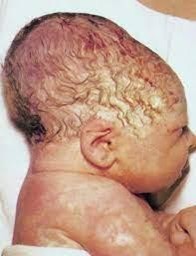A nurse is providing anticipatory guidance to the parents of a newborn about feeding skills. Place the following feeding skills in the order the newborn should develop them. (Move the steps into the box on the right, placing them in the selected order of performance. Use all of the steps.)
Pushes solid objects from mouth
Eats pieces of soft, cooked food
Drinks from a cup held by another person
Begins experimenting with a spoon
Correct Answer : A,B,C,D
Choice A rationale: Around 10 to 12 months of age, babies develop more advanced oral motor skills and can start to use their tongue to push solid objects out of their mouth. This is a natural reflex that helps prevent choking as they continue to learn how to eat solid foods.
Choice B rationale: Between 8 to 10 months of age, babies start to develop the ability to chew and swallow soft, cooked food. At this stage, they are typically introduced to mashed or finely chopped solid foods to complement their breast milk or formula diet.
Choice C rationale: Newborns typically start with bottle-feeding or breastfeeding. As they grow and develop, they eventually transition to drinking from a cup, which is usually introduced around 6 to 9 months of age. At this stage, the baby is held by another person while they drink from a cup with assistance.
Choice D rationale: Around 6 to 8 months of age, infants start showing an interest in self-feeding and may begin experimenting with a spoon. They may try to scoop food with a spoon but often need assistance and are still primarily dependent on being fed by a caregiver.
Nursing Test Bank
Naxlex Comprehensive Predictor Exams
Related Questions
Correct Answer is B
Explanation
Choice A rationale: The Mongolian spot is a bluish-gray birthmark that is often seen on the lower back or buttocks of newborns with darker skin tones. It is not related to the swelling described in the scenario.
Choice B rationale: Caput succedaneum is a common condition in newborns delivered by vacuum extraction. It is characterized by swelling of the soft tissues of the scalp that crosses the suture lines. The swelling occurs due to pressure from the vacuum extractor during delivery and is caused by fluid accumulation between the scalp and the skull. Caput succedaneum is typically a benign and self-resolving condition that does not require treatment.
Choice C rationale: Cephalhematoma is a collection of blood between the periosteum and the skull bone. Unlike caput succedaneum, it does not cross the suture lines and can take weeks to months to resolve.
Choice D rationale: Erythema toxicum is a common skin rash in newborns characterized by red or pink spots with a yellow or white bump in the center. It is not related to the swelling described in the scenario.

Correct Answer is B
Explanation
Choice A rationale: A positive contraction stress test warrants immediate attention and evaluation. Waiting for 24 hours to repeat the test could delay necessary interventions in case of fetal distress.
Choice B rationale: A positive contraction stress test indicates that there are late decelerations in the baby's heart rate during contractions, which may suggest fetal distress. In such cases, it is essential to admit the client to the hospital for further evaluation, monitoring, and appropriate management.
Choice C rationale: Checking the client's cervix for dilation is not the most appropriate action in response to a positive contraction stress test. Fetal well-being and assessment take priority in this situation.
Choice D rationale: A positive contraction stress test requires further action and should not be considered a routine finding. Proper management and evaluation are necessary when the test results are positive.
Whether you are a student looking to ace your exams or a practicing nurse seeking to enhance your expertise , our nursing education contents will empower you with the confidence and competence to make a difference in the lives of patients and become a respected leader in the healthcare field.
Visit Naxlex, invest in your future and unlock endless possibilities with our unparalleled nursing education contents today
Report Wrong Answer on the Current Question
Do you disagree with the answer? If yes, what is your expected answer? Explain.
Kindly be descriptive with the issue you are facing.
